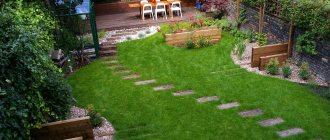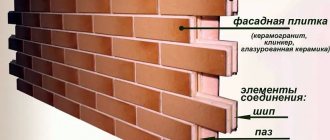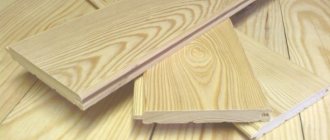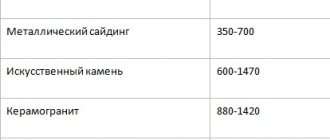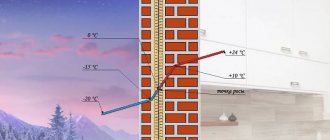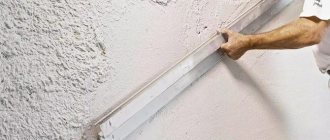How many poles are needed for 10 acres?
So, for a dacha plot of ten acres, the width of which is 20 m and the length of 50 m, you will need a fence 140 linear meters long. For a dacha measuring 15x66 m, you need to build a fence 162 m long. The smallest perimeter will be for a square plot of 31x32 m - only 126 linear meters.
Interesting materials:
What part of speech is the word eve? What part of speech is the word some? What part of speech is the word Really? What part of speech is the word night? What part of speech is the word very? What part of speech is the word however? What part of speech is the word now? What part of speech is the word as if? What part of speech is the word according to? What part of speech is the word after?
Typical plot sizes
Below is the perimeter (the sum of all sides) for square-shaped areas.
6 acres (600 m2) - 1 side ~24.5 m. Perimeter 98 meters
10 acres (1000 m2) - 1 side ~31.5 m. Perimeter 126 meters
14 acres (1400 m2) - 1 side ~37.5 m. Perimeter 150 meters
16 acres (1600 m2) - 1 side 40 m. Perimeter 160 meters
20 acres (2000 m2) - 1 side ~44.7 m. Perimeter 179 meters
To calculate materials, you can use our calculator
Fence calculator
Drainage
How many acres of land do you need to build a house?
how to calculate and find out the size of the plot? Last on the list, but not least important, is the drainage system. It prevents excessive accumulation of moisture in the soil, which can damage the foundation of buildings.
They are laid at a slight slope to create the necessary conditions for independent moisture removal. Its collection occurs using special holes that are drilled in the walls of the pipe branches. The diameter of these holes should not exceed 2 cm, otherwise the drainage system will become clogged with soil.
As a result, the pipes are filled with crushed stone, brushwood is laid on top and the top layer is soil that can be used as vegetable beds or for other purposes.
Zoning Features
Not only the aesthetics, but also the functionality of the site depends on the correct zoning of the territory. For a recreation area, choose a place at the end or in the rear of a residential building, from where a beautiful view of the landscape opens. Its arrangement should also be treated carefully and a creative approach to the choice of green spaces.
Typically, the territory is divided into three main zones - the house and recreation area, the household area and the garden.
Dividing the site into three zones:
However, in reality it all depends on the preferences of the owners. After all, everyone has their own priorities - some give up a recreation area and plant a full-fledged garden, and some cannot imagine life without their own garden.
Families with children need space for a playground, and possibly a swimming pool ; those who are passionate about gardening will probably put a greenhouse on the site.
Placement of objects on the site with the greenhouse:
The recreation area and residential part include a house for living, a garage, a parking space, a playground for children, a pond with an alpine slide, a swimming pool, and an outdoor gazebo. The utility area consists of a small shed for gardening tools, a workshop, an outdoor shower and toilet, and a bathhouse.
Each zone can be delimited . The paths will serve as an artificial delimiter. They must be laid in such a way as to provide convenient access to any area on the site. This can be done according to the “folk path” principle, that is, go to a given goal in the most convenient way. The path should be laid along this route in the future.
Peculiarity! You should decide how much space to devote to this or that zone yourself based on the desires and needs of your family members.
How to calculate the amount of corrugated sheeting for a fence?
The most common material for fencing is corrugated board. It is easy to install, durable, lightweight, and protects the fenced area from dirt, wind and prying eyes. The profile sheet is made of galvanized steel, coated with polymer coating and paint.
As a rule, a standard fence made of corrugated board has a thickness of 0.4 mm. The dimensions of the sheets are determined by the profile and can have different values. Let’s say, to calculate a fence made of corrugated sheets on a plot of 10 acres, we take standard sheets C8-1150 (1200 mm × 2000 mm). Let's assume that the plot has a rectangular shape, where the long side is 50 m, the short side is 20 m. Perimeter: 50*2+20*2=140 m. This will be the length of our fence.
The corrugated sheeting is mounted with an overlap, that is, out of a width of 1200 mm, only 1150 m will be useful. The overlap length is 50 mm. You can leave more, you can leave less, as you wish. Thus, 140/1.15 = 121.7, round up and get 122 sheets. It is advisable to take 1-2 more sheets for the gate and “spare”. There is a high probability of ruining several pieces if you have no installation experience.
How to accurately calculate the length of a fence by hundred square meters?
Documents for the site will help with this. They indicate the estate plan with the necessary parameters. Calculations of non-standard shaped areas are carried out by surveyors using special equipment. The diagram shows the length of all sides that make up the perimeter of the fence. It should be understood that this parameter is not an area. It is calculated by summing the length of all edges of the area.
Note! It is possible to calculate the perimeter of a site solely by area if the territory has a regular square shape, which is not the case in almost 80% of cases. The owner will need to extract the root of the area. The resulting value will be equal to the length of one side.
In other cases, the calculation is carried out by adding all sides. It doesn’t matter what shape the area is: rectangle, triangle or polyhedron. If the diagram does not indicate the parameters of the sides, they will need to be measured locally. The easiest way to do this is to stretch the cord, then, using measuring instruments, determine the length of each edge of the section.
Thus, before calculating the fence by acre, you should determine the shape of the site. Earth in the form of a rectangle and a triangle can have equal area, but different perimeter. This is important because the last parameter affects the calculation of the required amount of building materials.
Standard example
There are several “standard” arrangement schemes, one of which is worth examining in detail.
The entrance from the street leads us to a parking lot, next to which there is a house with a terrace. There is also a children's playground near the house. On the east side there is a long path that runs the entire length of the estate. Immediately upon leaving the house we can see a decorative pond and a family recreation area with a gazebo and barbecue.
Next are vegetable beds and a garden. Shrubs and trees are planted along the entire perimeter of the fence. Vegetable beds give way to a garden with beautiful flowers, and at the end of the estate there is a toilet, a bathhouse and other non-residential structures (for example, a barn). Such a scheme does not provide for a building for livestock, but if desired, the decorative pond can be replaced with such a structure, slightly shifting the place for growing vegetables.
Reservoirs
A classic pool, a small artificial pond or a reservoir suitable for swimming and at the same time performing a decorative function is up to you to decide. If you are planning to build a reservoir, you need to take into account the groundwater level, soil density, and find out whether communications pass through the planned location under the reservoir.
To create a pond, a low-lying area is best suited, especially for areas with a slope. If you want to make a pool, place it in an unshaded area so that the water warms up. But it’s better to stay away from deciduous trees - they will pollute the water.
Concept and formula for calculating a linear meter
A linear meter is a universal unit of measurement that is used to determine the amount of material or products of significant length. A linear meter is one meter of building materials without taking into account its width and height.
When the fence has no gaps, the amount of material is determined in linear meters
The use of values is usually resorted to when it is necessary to find out how much material (profiled sheets, polycarbonate or boards) will be required to build fences without gaps.
The height of the fence is not always determined by the dimensions of the material taken for construction. This means that when purchasing polycarbonate or other raw materials, it is necessary to adjust the dimensions of the material to the design parameters at the border of two sections.
Determine how many square meters are 6 hectares
How many acres are in one hectare - this question may be of interest to people who are planning to buy or rent a large area of land. Having personal property, for example a country house, we most often come across such a measure of land area as a hundred square meters. An ordinary summer resident does not need hectares of land. It is enough to build a house, arrange a flower bed, a barbecue, and even a swimming pool - that’s all the needs of a summer resident. But when planning, for example, to engage in agriculture, you won’t be able to limit yourself to hundreds of acres; hectares of land are of interest. And here the question inevitably arises: 1 hectare - how many acres is it? To be honest, one hectare is clearly not enough to run a serious agricultural business. And people with experience are well versed in the basics of the school curriculum, especially when it comes to land resources.
Other units of measurement
Having figured out how many acres are in a hectare of land, it is easy to translate indicators from ancient Russian measurement systems. The same applies to reverse translation of values.
Tithe
It is useful for people studying history and historical documents to know that a tithe of land is how much in acres. This unit of measurement was used when calculating the area of land. It was actively used before the introduction of the metric system. At the same time, there were several varieties of this value, for example, the government tithe was equal to 2400 fathoms squared.
For a visual representation, tithes mentally draw a territory with a length of 80 fathoms and a width of 30 fathoms. There may be another option - 40 fathoms wide and 60 fathoms long. A similar unit of measurement has been used since the 14th century. At first, two quarters were used to determine it. If you need to imagine a tithe in the form of a square, then each side is equal to 2500 fathoms squared or 1/10 of a verst.
In Ancient Rus' there were several types of tithes:
- A hundredth tithe is equal to 10,000 fathoms squared. It can be imagined as a square plot with sides of 100 fathoms.
- Economic tithe was also called scythe. Essentially, this is a plot of 40x80 fathoms or 3.2 thousand squares.
- Another type of economic tithe is round. This is a square territory with a side of 60 fathoms or 3.6 thousand squares.
- A plot measuring 10x80 is also called a melon tithe. If you measure the area in square fathoms, then it is 80 squares.
Acre
Now it’s the turn to consider an acre of land - how many hundred square meters? This land measure is used in countries with the English measurement system, for example, in the USA, Great Britain, Australia and Canada.
When converting acres, use the following rules, 1 acre is equal to:
- 0.004 square kilometers or 1/250 km²;
- 4 ore;
- 4840 yards square;
- 0.405 ha;
- 0.00405 acres;
- 0.37 dessiatines;
- 888.97 fathoms square;
- 40.46856 are;
- 1/640 miles squared;
- 1/30 of the land yards.
Previously, an acre referred to the area of land that one farmer cultivated in a day. In our country this unit of measurement is not used.

